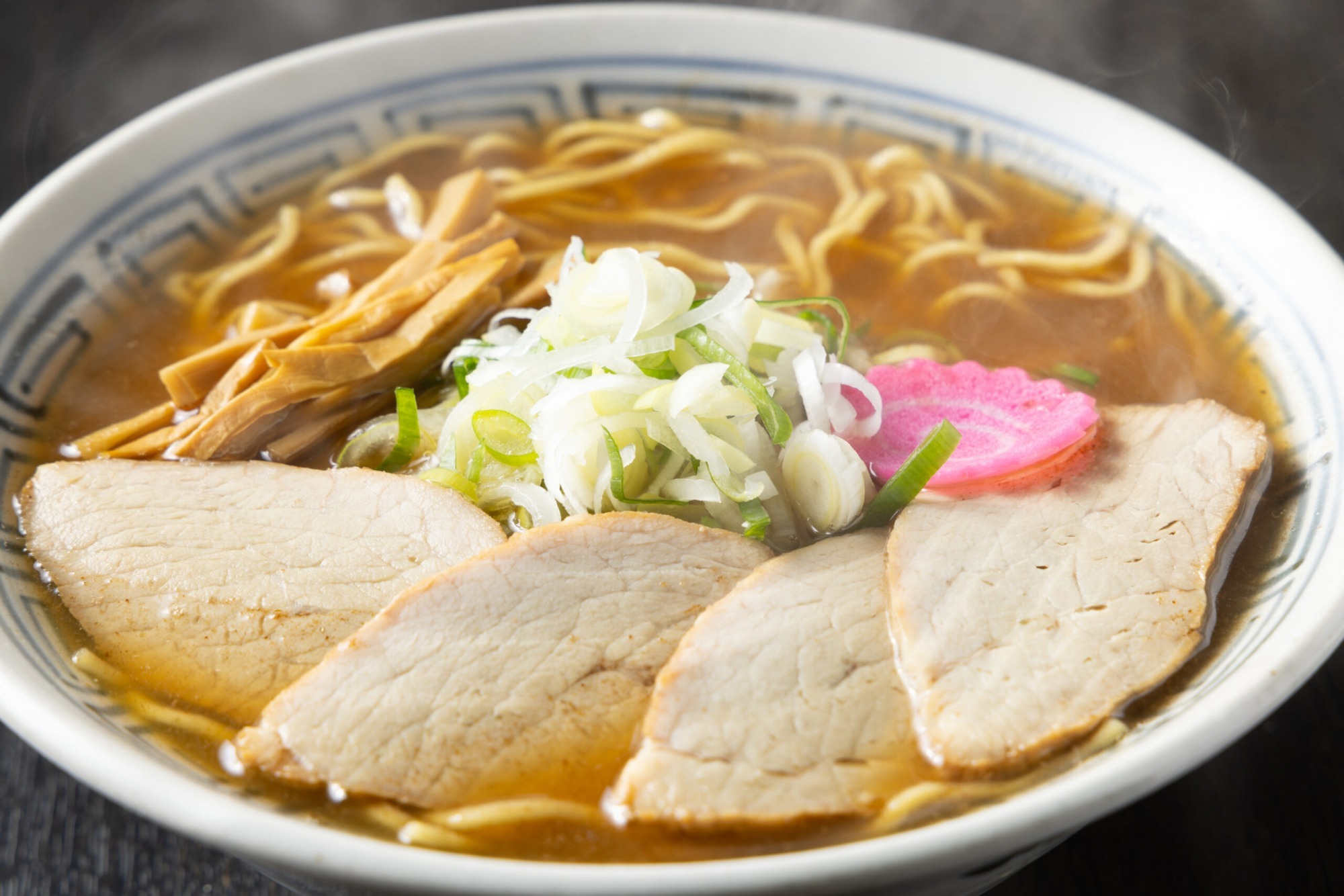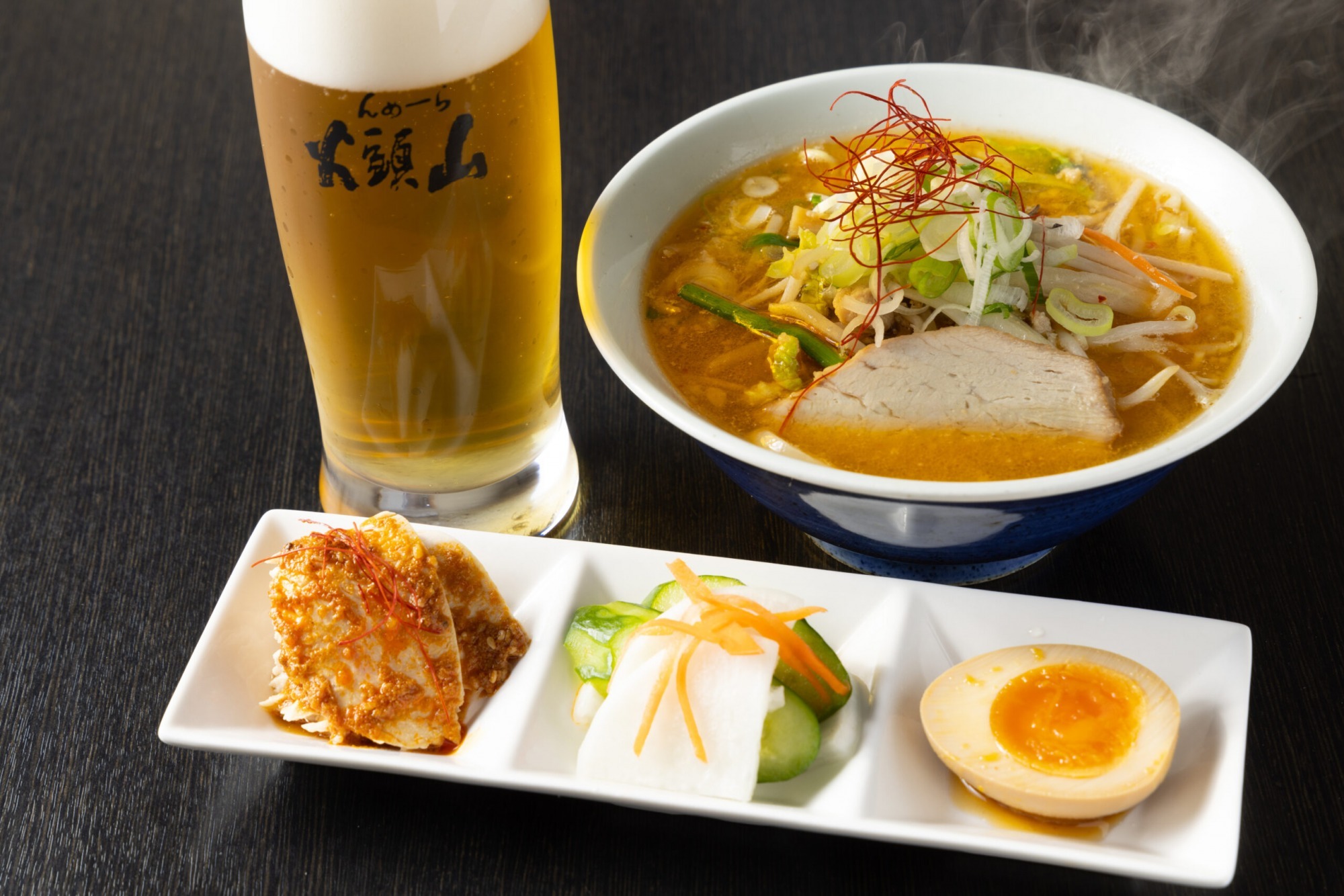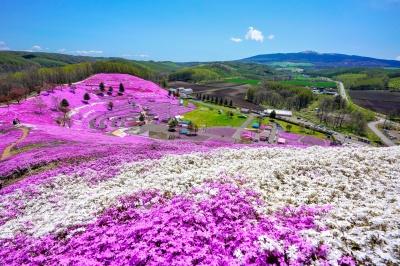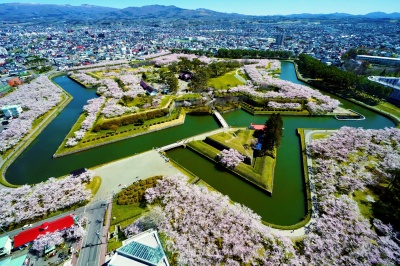Why the World Loves Ramen: The Story of Ramen Santouka

Dashi—the soup stock that is a critical ingredient of Japanese cuisine—has the power to warm the body and the soul. Since ancient times, Japanese people have cultivated the art of blending bonito flakes, kelp, and other flavorings from the sea and land to create dashi that is rich with umami. Even as foreign cuisines have grown more popular within the country, dashi continues to occupy a special place in the Japanese palate. In fact, it is quality dashi soup that has made ramen one of Japan’s most representative dishes. While there are many other Japanese dishes that come in a bowl, ramen is one that you really have to experience in Japan.
- * Please note that the text shown on this page includes machine translations.
Profile
President of Ramen Santouka Asahikawa Honten (main branch)
Mr. Oki Hatanaka
The world-famous ramen shop "Ramen Santouka" started in Asahikawa City, Hokkaido. Mr. Hatanaka continues to develop new flavors while preserving the flavor of the ramen his father made.
A new style of Asahikawa ramen
If you are a ramen fan, you probably know that every region of Japan boasts its own distinctive style of ramen soup. Hokkaido’s cities like Sapporo and Asahikawa enjoy access to an abundance of farm and marine products, while the cold, dry climate of the island fosters a love of hot dishes. So ramen shops are popular, and they compete with their own special flavorings. Located in the center of Hokkaido, Asahikawa is famed for its shoyu (soy sauce flavored) ramen. But when Ramen Santouka opened its first store there, it gained a devoted following with something different, its signature shio (mild, salt-flavored) ramen.
Competing with “shio taste”
When you open the door to Ramen Santouka’s flagship store—just a three-minute walk from Asahikawa Station—the homey aroma of the soup will immediately whet your appetite. Most first-timers order the shio ramen, a menu item that hasn’t changed since the store first opened. The white soup looks thick and rich, but that first sip will astonish you with its gentle flavor. There’s nothing sharp or pungent about it. The ingredients—pork bones, dried fish, vegetables—blend so perfectly that you can’t really distinguish them. As you get into the rhythm of slurping up the noodles, the soup naturally follows them into your mouth. Your chopsticks keep moving non stop as you devour the impossibly tender char-siu pork slices and drain the soup to the last drop. Amazingly, you won’t feel thirsty when you’re done—if anything, you’ll crave some more of that soup. Prepared using a painstaking process with top-quality ingredients, the soup is what keeps customers coming back for more.
Birth of “Ramen Santouka”
The first Ramen Santouka store was opened in 1988 by Hitoshi Hatanaka, father of Oki Hatanaka, president of the Asahikawa flagship store today. That spring, Hitoshi moved his family to Asahikawa from their home in northern Hokkaido. Oki remembers the day his father first became obsessed with ramen. After seeing the film Tampopo at home, directed by Juzo Itami, which is about ramen, his father got the urge to eat some ramen and went to a local eatery. However, the ramen there tasted nowhere near as good as the ramen in the story. “The next day, when I got home from school, there was a delicious aroma wafting from a big alumite pot sitting on our wood stove,” recalls Oki. “From that day on we always had ramen for dinner, but that was fine with me. My father’s soup tasted so good, I wanted to have it every day.”
Three months later, Hitoshi Hatanaka opened the first Ramen Santouka, a tiny restaurant offering only shio ramen, in Asahikawa. He worked there from early in the morning to late at night every day, with Oki and his siblings pitching in. “I would start draining the blood from the pork bones the day before. I’d boil them and drain the hot water and put them in cold water, carefully clean the blood off with my fingers, put them in a big stockpot of water, and place the pot over a very low flame. This was my job before I went to school,” says Oki. His father’s goal was to make a soup so flavorful that customers would want to drink every last drop of it. Over time the fans of his soup grew in number, and today the company owns 54 restaurants both in Japan and abroad.
Harmony of ingredients
Rule No. 1 at Ramen Santouka is that each store must make the soup from scratch in its own kitchen. High-quality pork bones are boiled for 16 hours (with a dashi of vegetables and/or fish added depending on the recipe), then strained. The resulting soup is not re-boiled, but kept at a temperature of 95°C to retain its aroma and texture. The soup is served in round, thick Arita-ware ceramic bowls to keep it warm. Though not apparent to the eye, the semi-dehydrated noodles, made from Hokkaido wheat, have a slightly coarse surface that both keeps the noodles springy and helps the soup cling to them. The soup and noodles blend in the bowl into one perfect serving of ramen.
The path to becoming a ramen chef
After finishing high school, Oki Hatanaka worked at restaurants in Tokyo and in Melbourne, Australia, then returned home to learn the art of ramen from his father. What brought him home, he says, was the flavor of his father’s ramen: “When I tasted Santouka ramen for the first time in two years, I realized I couldn’t do without it.” Oki’s motto is “Never stop updating.” He adds, “That means knowing how to put a smile on the faces of our customers each and every day.” He develops new menu items in the kitchen of the Asahikawa flagship store, then gradually introduces them to every branch. So if you want to experience the latest flavors of Ramen Santouka, go to Asahikawa. That’s where you can savor the handiwork of Santouka’s second-generation master, who says, “I always have several new ideas in my head.” That special dashi soup will quickly warm you up on the chilliest Asahikawa night.
Expansion overseas
At one time, Japanese cuisine meant sushi and tempura to most people outside of Japan. Today, for more and more people, it means ramen. Since the early 2000s, Japanese ramen restaurants have proliferated overseas, and it’s now possible to enjoy good ramen around the globe. One of the first ramen stores to venture abroad was Asahikawa-based Ramen Santouka, which has played a significant role in bringing Hokkaido’s unique ramen culture to the rest of the world.
When Hitoshi Hatanaka opened his first restaurant in Asahikawa, Hokkaido in 1988, it had only nine seats. But the specially prepared soup of Ramen Santouka’s shio (mild salt-flavored) ramen soon earned itself fans all over the country. In 1999, Hatanaka founded Ab-out Co., Ltd. for the purpose of expanding the franchise. President Shinichi Kikuta, who together with Chairman Hatanaka has spearheaded the growth of the Ramen Santouka brand, spoke to us about the company’s expansion abroad.
The Original Taste
Kikuta says the idea of expanding Ramen Santouka overseas was born in the United States. Pork cheek was favored as a grilled meat in Japan, but in the US it could be purchased cheaply as there was no demand for it. In order to secure a stable supply of pork cheek for the expanding business, he and Chairman Hatanaka set off for the state of Nebraska with suitcases full of ramen bowls, utensils, and ingredients. Their plan was to cook up some ramen at the meat processing plant where they had a contract, and demonstrate how the meat would be served to customers in the form of char-siu. There, they treated not just the management, but also the workers who cut the meat, to bowls of ramen.
“It must have been a strange sight for them,” Kikuta recalls. “But we believed that the best way to get the people who actually prepared the meat to appreciate the importance of their work was to have them taste the ramen themselves.” Pork cheek requires a different preparation technique from other parts of the pig, and it took a year to teach the workers to process the meat according to specifications. But once they had succeeded in securing a reliable source of pork and pork bone, the company was able to forge ahead with plans to open stores abroad that would uphold the original flavor of Santouka ramen.
The roots of Ramen Santouka
However, their initial foray overseas ended in failure, Kikuta says. Though they concluded a franchise contract with a Hong Kong company, a consensus could not be reached on maintaining Santouka’s original flavoring. Learning from that experience, they established a policy of first opening directly managed stores at overseas locations, then dispatching trustworthy staff to get them going, and providing subsequent guidance to local partners. This stubborn determination to maintain the original Japanese flavor at every store has no doubt helped solidify public trust in the Ramen Santouka brand.
The bottom line at Santouka is that their product—above all, the soup—is made from scratch in the kitchen of every store. This policy is strictly observed wherever possible in each country permit. But doesn’t making the soup on site pose problems for quality control, as well as reduce the efficiency that opening multiple stores is expected to provide? “It’s our job to ensure that it isn’t a problem,” Kikuta replies. Currently around 20 staff who trained in Japan provide guidance to overseas stores in reproducing the original Santouka flavor.
Strong pride in taste
“I often eat at the San Jose branch, so I wanted to check out the main store,” said an overseas visitor who had just finished a meal at the Asahikawa flagship store. She added that she had been to several Ramen Santouka stores in the US, and that the soup there tasted the same as in Asahikawa—“but the noodles here were especially tasty.”
The driving force behind Ramen Santouka’s determination to expand overseas—never an easy proposition—is pride in the flavor of their product. “Once people try it, they are sure to want to come to Hokkaido,” declares President Kikuta. “Whether they are from Japan or abroad, we want people to gain some pleasure and peace of mind from eating our ramen. That’s our greatest goal.”
Enjoy ramen in Sapporo
One treat you can only find in Hokkaido, at the Asahikawa flagship and Sapporo Kita-Ichijo Chikaho stores, is founder Hitoshi Hatanaka’s special recipe for shoyu (soy sauce flavored) ramen.

The Chikaho store is conveniently located close to the Sapporo Clock Tower, a major tourist attraction. Your stomach and your soul will gratefully reward you for adding a bowl of ramen to your Hokkaido itinerary!

Ranking of popular articles
- Hokkaido Summer Travel Guide

- https://www.visit-hokkaido.jp/en/feature/travelguide_summer
- Hokkaido Spring Travel Guide

- https://www.visit-hokkaido.jp/en/feature/travelguide_spring
- Here are the recommended cherry blossom viewing spots!

- https://www.visit-hokkaido.jp/en/feature/sakura
- When is the best time to see lavender? Recommended Lavender Spots in Hokkaido

- https://www.visit-hokkaido.jp/en/feature/lavender
- Best Places to View Flowers in Hokkaido vol. 1

- https://www.visit-hokkaido.jp/en/feature/best-places-to-view-flowers-in-hokkaido-vol-1










